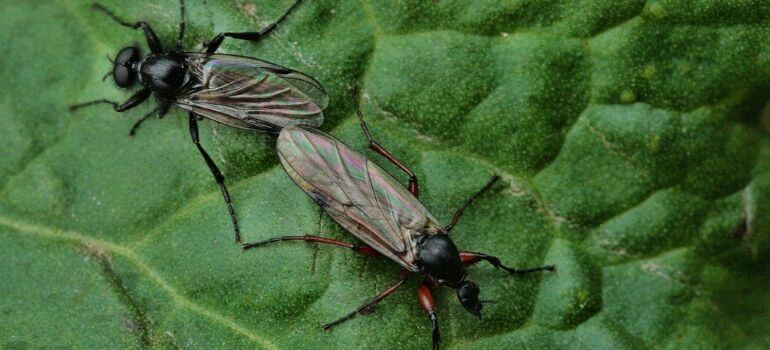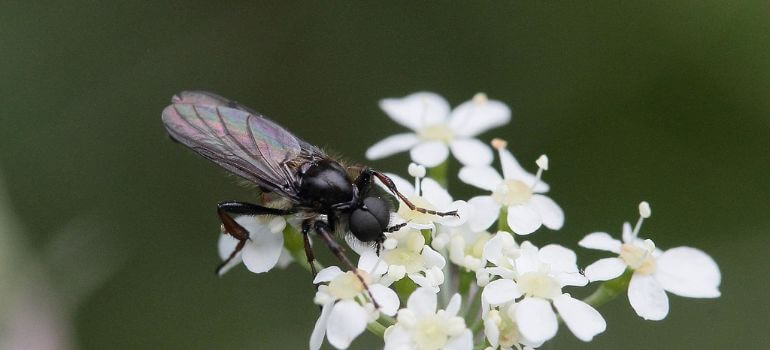Introduction
Gardening can be a fulfilling and rewarding hobby, but it comes with its fair share of challenges. One of the most common challenges faced by gardeners is dealing with pests that can wreak havoc on their plants. In this article, we will delve into the world of two notorious garden pests: the Fungus Gnat and the Root Aphid. We will explore their characteristics, behaviors, and the best methods to control and prevent infestations. Let’s dive in and learn how to protect your beloved garden.
Understanding Fungus Gnats
What are Fungus Gnats?
Fungus gnats, scientifically known as Sciaridae, are small flying insects commonly found in indoor and outdoor gardens. They are usually black or dark gray and measure about 1/8 inch in length. These tiny insects are notorious for their ability to multiply rapidly, leading to severe infestations.
Life Cycle and Behavior
Fungus gnats lay their eggs in moist soil, where the larvae hatch and feed on organic matter and plant roots. This feeding can weaken plants and stunt their growth. The adult gnats are attracted to light and can often be seen hovering around potted plants or garden beds.
Root Aphids: The Silent Destroyers
Introduction to Root Aphids
Root aphids, on the other hand, are not as easily detectable as fungus gnats. These small, soft-bodied insects infest the root systems of plants and can cause substantial damage without being noticed until it’s too late. They come in various colors, such as green, brown, or black.
Life Cycle and Behavior
Root aphids feed on the sap of plant roots, causing reduced nutrient absorption and overall plant stress. They reproduce asexually, leading to rapid population growth. Unlike fungus gnats, root aphids are usually found below the soil surface, making them challenging to spot.
The Battle: Fungus Gnat vs. Root Aphid

Now that we have a basic understanding of these garden pests, let’s compare them in various aspects.
Damage to Plants
Fungus Gnats
Fungus gnats primarily damage plants by their larvae feeding on root systems. While this can weaken plants, it is usually less destructive than the damage caused by root aphids.
Root Aphids
Root aphids can cause severe damage to plant roots, leading to stunted growth, wilting, and even plant death. They are more destructive in comparison to fungus gnats.
Detection
Fungus Gnats
Fungus gnats are relatively easier to detect due to their visible presence around plants.
Root Aphids
Detecting root aphids is challenging as they remain hidden beneath the soil. Visual signs of damage may be the only indication of their presence.
Control Methods
Fungus Gnats
Controlling fungus gnats can be achieved through various methods, including sticky traps, soil drenches, and maintaining proper soil moisture levels.
Root Aphids
Root aphids are more challenging to control, often requiring systemic insecticides or the removal of heavily infested plants.
Prevention
Fungus Gnats
Preventing fungus gnat infestations involves avoiding overwatering, using well-draining soil, and keeping the garden clean and free of decaying organic matter.
Root Aphids
Preventing root aphids is trickier but can be done by regularly inspecting plants and using preventive measures like beneficial nematodes.
The Importance of Soil Health
In addition to understanding the differences between fungus gnats and root aphids, it’s crucial to emphasize the significance of soil health in preventing and managing these garden pests. Healthy soil is the foundation of a thriving garden and plays a vital role in deterring infestations.
Soil Moisture Management
Maintaining proper soil moisture levels is key to preventing fungus gnat infestations. Overwatering can create an ideal environment for these pests to thrive. Use a moisture meter to monitor soil moisture and water your plants only when necessary. Ensure that your pots have proper drainage to avoid waterlogged soil.
Soil Quality and Aeration
Healthy, well-draining soil is less attractive to both fungus gnats and root aphids. Choose high-quality potting mixtures and incorporate organic matter to improve soil structure and aeration. Well-aerated soil makes it harder for pests to establish themselves in the root zone.
Beneficial Microorganisms
Encourage the growth of beneficial microorganisms in your soil. These microorganisms help break down organic matter, making it less appealing to fungus gnats. You can introduce compost or organic mulch to enhance microbial activity.
Crop Rotation
If you have experienced root aphid infestations in the past, consider practicing crop rotation. Changing the location of susceptible plants each season can disrupt the life cycle of root aphids, reducing the likelihood of recurrence.
Natural Predators
As mentioned earlier, introducing natural predators like ladybugs and predatory nematodes can be an effective way to keep both fungus gnats and root aphids in check. These beneficial insects feed on the pests, helping to maintain a healthy garden ecosystem.
Conclusion
In the battle of Fungus Gnats vs. Root Aphids, both pests pose threats to your garden. While fungus gnats are more visible and less destructive, root aphids can silently devastate your plants. The key to successful pest management is early detection and appropriate control measures. By maintaining a healthy garden environment and staying vigilant, you can protect your plants from these garden invaders.
FAQs
Using chemical pesticides should be a last resort. Try non-toxic methods like sticky traps and beneficial insects first to minimize harm to your garden ecosystem.
No plant is entirely immune, but some are more resistant than others. Research and select plants that are less susceptible to fungus gnats and root aphids for your garden.
Yes, homemade remedies like neem oil and insecticidal soap can be effective against both fungus gnats and root aphids when used correctly.
Regularly inspect your plants at least once a week to catch any potential pest problems early.
Yes, beneficial insects like ladybugs and predatory nematodes can be introduced into your garden to help control both fungus gnats and root aphids naturally.
In this article, we’ve explored the battle between fungus gnats and root aphids, providing insights into their characteristics, behaviors, and methods to control them. Remember that a healthy garden is the best defense against these pests, so take good care of your plants and stay vigilant to keep your garden thriving.




